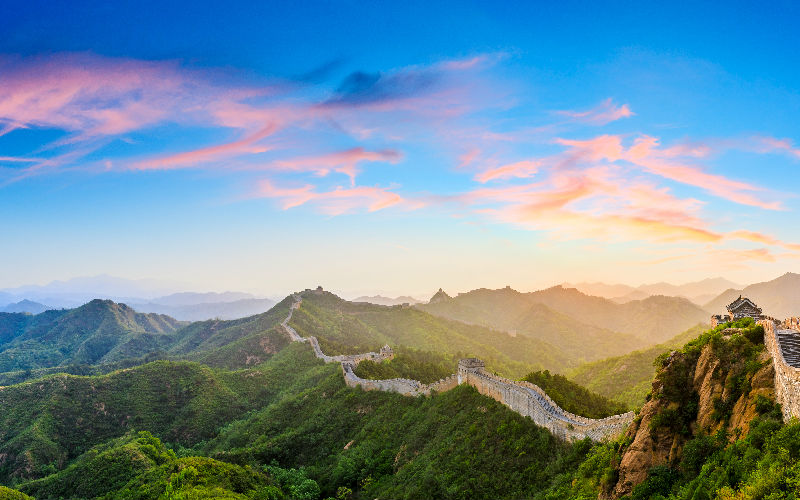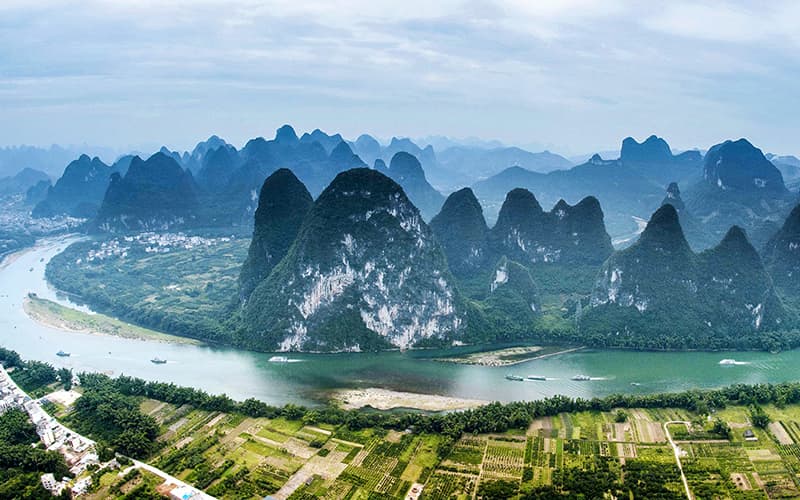Terracotta Army
Last Updated: January 09,2019The Terracotta Army was built to go follow the tomb in which the first Emperor of China was laid to rest as an afterlife protective detail.
The multitude of human sized models stand for the soldiers that brought China together during the final days of the war. They were made individually, fired after molding then brought together and painted.
Regarded as one of the master pieces of the 20th century, it is amongst the most important archaeological sites currently available on earth today.
Interesting Facts
One of the most amazing archaeological findings of the last century
An integral member of the Qin Shi Huang mausoleum which is considered to the one of the biggest ancient majestic tomb compound. With over eight thousand different human size status discovered, the Terracotta Army still remains the biggest.
Most of the statues range between 170 – 195 cm in height with varying degree of facial expressions and gestures. These statue say a lot about the technology, arts, culture and military of the Qin Empire.
Commonly referred to as the 8th wonder of the World
Jacques Chirac a former president of France, in the past referred to the Terracotta Army as the 8th Wonder of the World. He said if you haven't had the opportunity of seeing the pyramids you cannot say you have been to Egypt and also if you can't claim to have visited China without seeing the terracotta statue.
The Terracotta Army was built two centuries ago
Construction on the Terracotta began 246 BC by the first Chinese emperor Qin Shi Huang who was 13 years old at the time when he became emperor.
The original belief in china was that statues could be animated in life after death and as such, the Terracotta army was the arm of the emperor after death.
Several years on, the soldiers that represent the army represents an amazing level of artistry and craftsmanship from over two centuries ago.
Over seven hundred thousand laborers were required to build the Terracotta army which took about 40 years to complete.
Construction began when the emperor ascended the throne in 246 BC, and ended 4 years after the emperor's death in 206 BC, which signaled the beginning of the Han Dynasty.
Interestingly, there are no two statue that look exactly the same.
If you are not in awe about the magnitude of terracotta warriors, I suggest to take a closer look at the statues, and be stunned at how no two figures are exactly the same. This is craftsmanship at its very best.
Each warrior has a peculiar facial expression. The generals, archers, cavalry and infantry all have different facial expression, hairstyles and clothing.

Reasons and How the Terracotta Warriors were made
The terracotta status where created at the behest of Emperor Qin (/chin/), from which the name originated from.
Why
Protection after death for the Emperor
The original belief in china was that statues could be animated in life after death and as such, the Terracotta army was the arm of the emperor after death. He wanted to be protected in the same way he was during his lifetime.
A display of the Emperor's Reign
It was built as a symbol to remember the victory of the emperor's army over the warring factions in china.
An alternative of human soldiers
Earlier emperors had soldiers buried alive with their corpse to serve as protection in their graves. The terracotta army was produced as an alternative to human soldiers.
How the Terracotta Army was found
In 1974 some farmer who were digging a well didn't know they were about to unearth one of the most amazing findings of the last century. The Terracotta Army figures' had been hidden underground for over two centuries before excavation, and today is known to be one of the most visited archaeological locations in the world.
The initial site that was discovered was called Vault one while subsequent sites which were about twenty meters away are known as vault two and three respectively.
In 1987 the site of the Terracotta army was designated a UNESCO world cultural heritage site.
Main Attractions found in the Museum
This museum comprises of a hall comprising of Bronze Chariots and three different vaults; one, two and three respectively. The first vault is usually filled with visiting tourist and our guide say the vaults are best view from the corners around the first vault.
Vault One – Displays about two thousand warriors
The first vault represent the biggest and most interesting vault, believed to house in excess of six thousand terracotta statues and horses, although there are less than two thousand status on display. The amazing pictures of the Terracotta Amy were captured from vault one.
The horses and their soldiers are lined up in a rectangular collection facing the east. Each statue is armed with a dagger, and a long spear, behind the army of soldiers are 38 chariots driven by horses.
On the other sides of the vaults are statues representing the defense wing of the army, enough to intimidate anyone who stands in front the moving soldiers.
Like we have said previously, each statue is different form one another in facial expression and features, hairstyle, gestures and clothing, giving us enough information to study the culture, economic history and military of the ancient days.
Vault one opened its doors to tourists and visitors in the late 1970s. The vault is approximately 210 meters in length, 62 meters in width, and the base of the pit ranges from about 4 to 6 meters beyond ground level.
Vaults Two - Unearths the wonders of the old Army Array
Warriors and horses in vault two form a rigorous battle array.
Works are still ongoing in both vault two and vault three.
Vault two serves as the main point of attraction as it unearths the wonders of the old army array. It comprises of 4 units which measures 84 meters from north to south and 94 meters from west to east with a depth of 5 meters.
The first row comprises of both standing and kneeling archers while the second row comprises of a chariot war collection. The third is mixed with chariot, infantry and trooper all lined up in a rectangular format, and finally the last row comprises of various troopers with weapons. All these units make up a fierce battle array.
Vault Three - Represents the Command Post
The smallest of all the vault is the third vault, it comprises of only 68 terracotta headless statues. It is glaring that the last vault represents the seat of command as the entire statues in the collection are officials.
The Exhibition of Bronze Chariots
The carriages comprises of about 3500 individual parts and where ridden by 4 separate horses. The 2nd horse is 3.17 meters in length with a height of about 1.06 meters. The bronze horses ranges from between to 65 to 67 cm in height and 120 meters in length.
The main metal used to mold the carriages was bronze, however it also comprised of gold and silver ornaments totaling about 1720 pieces. The perfectly designed carriages represent the best bronze artifact in China and are arguably the biggest singular piece of bronzeware available anywhere on earth.

Explore the History in Terracotta Army with UME Travel
Touring the Terracotta Army with us. As a place rich in history and culture, having a guide along during the trip is a great way to enjoy the tour. You will have a unique tour and private guide served only for you! See those tours first and contact our travel consultant to tell us your travel plan!











